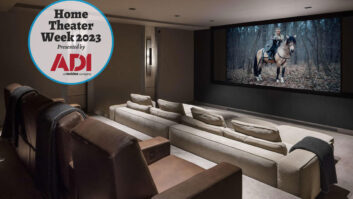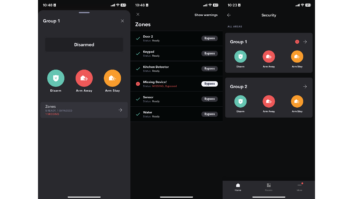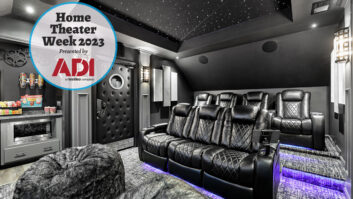Question: I’m thinking about expanding my A/V integration business into the production home market. Do you have any advice for me?
Almost every one of my clients has attempted to capitalize on production (tract) homes at one time or another and, for the most part, the end results are less than exciting. Does this mean I recommend my clients avoid such work? This is not at all what I mean. What this does suggest is that the work is unique and should be thought of as a completely separate department which can stand on its own.
Retailers who are now residential contractors are already dealing with having multi-departments relating to custom installation, and to add one more area of responsibility is sometimes difficult. I thought, therefore, I would outline some of the problems inherent within this area of our industry.
Let me begin by saying that the work on production homes falls clearly into the realm of contractor and subcontractor relationships in construction. Most of the other work performed by my clients would fall into the area of custom/retail work that is contracted directly with the homeowner. I know the architect and custom contractor are involved on production homes, but the financial contract is typically with the homeowner.
Fortunately, it is much easier to financially protect yourself in a relationship with the homeowner, and establish your contract specifications relating to payment and performance. In addition, when you are working in tandem with a homeowner and their architect or custom builder, you do not have to consider multiple production projects within a short time table but, instead, can concentrate on specific projects that are relatively easier to schedule. Let me give you an example of what I am talking about.
I am often asked to do industry surveys, which, in turn, allows me to compare numerous dealers and provide statistical feedback. One particular comparison really caught my attention. I noticed two dealers with sales volumes exceeding $8,000,000 in annual sales. One dealer employed about 25 personnel, while the other employed 55. The dealer with fewer personnel was extremely profitable while the other dealer was losing money. In analyzing their approach to marketing I found the dealer with fewer employees was, for the most part, involved with retail and custom homes while the other was involved in limited retail and custom and a tremendous amount of production homes. Do not misunderstand what I am saying. It is not necessarily bad to have the excessive personnel, but you must be sure that with this level of expense you also have adequate working capital and profit to justify a reasonable return for your effort rather then end up losing money while you chase your tail.
Most of the dealers I work with have made it a point to balance their businesses in the area of sales between retail customers and custom home builders, but others also take on a certain level of production homes providing that they can make money on the projections, manage them efficiently and insure the necessary cash flow to finance the projects. For instance, many companies allow general contractors to dictate what they are willing to pay for structured wire and a limited amount of additional equipment such as in-wall speakers, etc. To add insult to injury, they also negotiate a financial portion of this work for themselves. Inexperienced dealers take on this work knowing that it will probably be a loss leader with the anticipation of selling additional equipment directly to the homeowner thereafter. This is living in a fool’s paradise.
I know that new construction and retrofit construction is booming, which is largely due to tremendously low interest rates, but this does not necessarily mean that the homeowner in a production home project is willing to spend additional money for theaters, exotic lighting, multi-room, multi-source systems, etc. Unfortunately many of these loss-leader investments made by dealers end up with the sale of additional equipment to perhaps three out of 10 homes they initially work on.
The amount of add-on sales often does not generate enough profit to offset the overall losses associated with the project. This is not a pretty picture. In addition, many dealers are not aware of the extensive management requirements needed to support this area of the business. You will need additional vehicles and installation crews, additional support people for scheduling and certainly more office personnel to keep track of the project’s economics to insure that payment and billing is not a problem. All of this information needs to be contemplated to determine whether this additional profit center will work in your business. If this activity is not isolated in a separate income department, then you cannot accurately anticipate the financial results.
So, let’s talk about the implications on cash flow. To differentiate between these projects and other custom work you will need to look at the general methods of payment under the contracts. When taking on a custom home project with a homeowner you are paid every step of the way in advance of performing the work, from design and engineering to pre-wire, to trim, to final/programming. The most you might leave on the table is the final five to l0 percent retention for completion. This is not typically the case with production homes, where you are usually asked to complete a section of homes, submit the invoice for this work and wait 30-60 days for the construction draw affecting your work to be issued prior to your being paid.
I know there are numerous processes that vary slightly from the above, but this is a fairly typical scenario. What this means is that you are now investing your working capital in the production home projects you are working on. This is often done without securing financing for these projects to protect the cash flow needs of the business. If this resulted in a tremendous profit for your investment and risk, I would say more power to you. If, however, this were initially at a loss with the future recovery of that loss not yet committed for by the homeowner, I would be very nervous about the effects on the rest of my business.
Some of dealers are able to pursue production home projects and achieve a decent return for their effort, but they do many things differently than described above. For one thing, they make sure that they get the price they need to make money on their initial work on production homes. If the builder needs a share of this, let him add it to your invoice. Do not reduce your sales figure to accommodate the builder. Also make sure that you maximize the residential systems displayed by the builder for you in his models with excellent graphics and a clear understanding of how this benefits the home owner in the future. Differentiate yourself from other subcontractors with regard to payment. Insist that if you are to do the work you are paid promptly every two or three weeks on projects completed without regard to his construction draws. Seek the help of a banker or other sources of working capital to finance this venture in your business so as not to interrupt the normal cash flow in other areas of your business.
Finally, let’s talk about visibility for this venture. If you already sell at retail level and are also doing a large portion of your work in custom homes, you should already have divided the business income statement in multiple profit centers for retail, installation and custom materials as well as administrative costs. With the addition of production, you need to create an additional department for this activity. This is not to allocate administrative costs, but to allocate sales, cost of sales and operational costs for production homes. In doing so, this will make your decisions much clearer as to what to do to improve your ability to be successful in production homes.
Remember that most existing businesses in this industry already are having trouble transitioning from traditional retail to doing 60 to 70 percent custom. Be sure that you have the management skills to handle this entirely different area of our industry without taking away from your existing business. It can be a very rewarding part of your business to add production homes, but do not enter it without doing some projections, cost analysis, etc., and make sure it does not result in seriously abusing your existing business.
Darrell McComber ([email protected]) is a financial consultant to the A/V retail and custom installation industry in Warrenton, Virginia.







